In an organic chemistery laboratory a scientist subjecteda hydrocarbon to combustion The products occupied a volume ratio of 4:3 under the same conditions of temperature and pressure .The scientist drew the possible structures of the hydrocarbon. She then subjected the compound to ozonolysis to identify the exact structure. Predict the products formed when the compound is treated with bro-mine water.
General combustion equation is
CxHy+(x+y4)O2→×.CO2+y2H2C As the molar ratio of CO2 and H2O is 4:3
x=4 and y2=3⇒y=6
∴X=C4H6
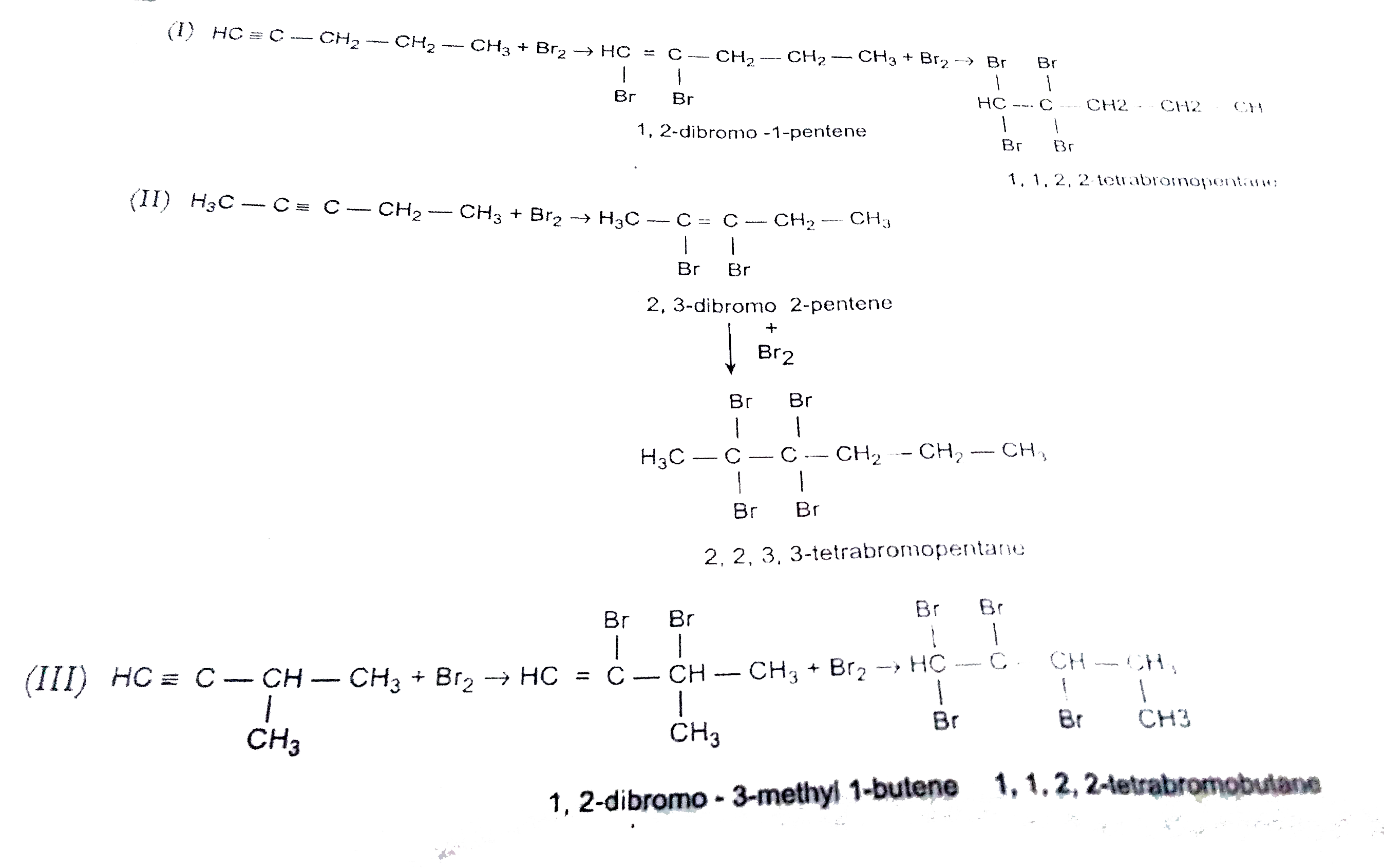
Since it reacts With bromine water and its formula indicates that X is butyne
∴ X may be 1-Butyne or 2- Butyne
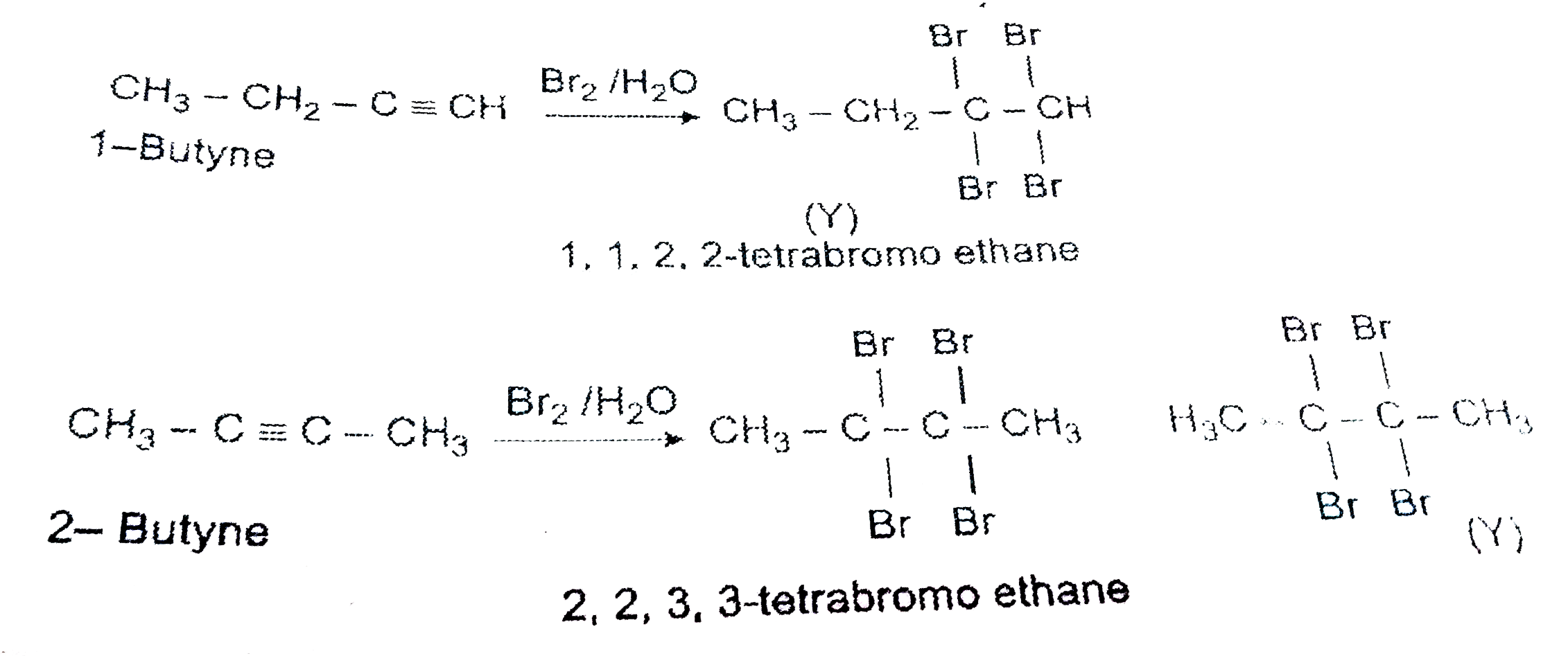
Topper's Solved these Questions
- Organic ChemistryBOOK - PEARSON IIT JEE FOUNDATIONCHAPTER - Organic ChemistryEXERCISE - Level 3
9 Videos
- Organic ChemistryBOOK - PEARSON IIT JEE FOUNDATIONCHAPTER - Organic ChemistryEXERCISE - Level 1
39 Videos
- NATURE OF MATTER BOOK - PEARSON IIT JEE FOUNDATIONCHAPTER - NATURE OF MATTER EXERCISE - LEVEL 3
10 Videos
- PERIODIC CLASSIFICATION OF ELEMENTSBOOK - PEARSON IIT JEE FOUNDATIONCHAPTER - PERIODIC CLASSIFICATION OF ELEMENTSEXERCISE - Level 3
10 Videos
Similar Questions
Read the given passage and answer the questions number 1 to 5 that follow:
The substitution reaction of alkyl halide mainly occurs by SN1 and SN2 mechanism. Whatever mechanism alkyl halides follow for the substitution reaction to occur, the polarity of the carbon halogen bond is responsible for these substitution reactions. The rate of SN1 reactions are governed by the stability of carbocation whereas for SN2 reactions steric factor is the deciding factor. If the starting material is a chiral compound, we may end up with an inverted product or racemic mixture depending upon the type of mechanism followed by alkyl halide. Cleavage of ethers with HI also governed by steric factor and stability of carbocation, which indicates that in organic chemistry, these two major factors help us in deciding the kind of product formed
1. Predict the stereochemistry of the product formed if an optically active alkyl halide undergoes substitution reaction by SN1 mechanism.
2. Name the instrument used for measuring the angle by which the plane polarised light is rotated.
3. Predict the major product formed when 2-Bromopentane reacts with alcoholic KOH.
4. Give one use of CHI3
5. Write the structures of the products formed when anisole is treated with HI.
View SolutionRead the given passage and answer the questions number 1 to 5 that follow:
The substitution reaction of alkyl halide mainly occurs by SN1 and SN2 mechanism. Whatever mechanism alkyl halides follow for the substitution reaction to occur, the polarity of the carbon halogen bond is responsible for these substitution reactions. The rate of SN1 reactions are governed by the stability of carbocation whereas for SN2 reactions steric factor is the deciding factor. If the starting material is a chiral compound, we may end up with an inverted product or racemic mixture depending upon the type of mechanism followed by alkyl halide. Cleavage of ethers with HI also governed by steric factor and stability of carbocation, which indicates that in organic chemistry, these two major factors help us in deciding the kind of product formed
1. Predict the stereochemistry of the product formed if an optically active alkyl halide undergoes substitution reaction by SN1 mechanism.
2. Name the instrument used for measuring the angle by which the plane polarised light is rotated.
3. Predict the major product formed when 2-Bromopentane reacts with alcoholic KOH.
4. Give one use of CHI3
5. Write the structures of the products formed when anisole is treated with HI.
View Solution
Knowledge Check
Ozonolysis of a compound Agathene dicarboxylic acid gives following compounds :
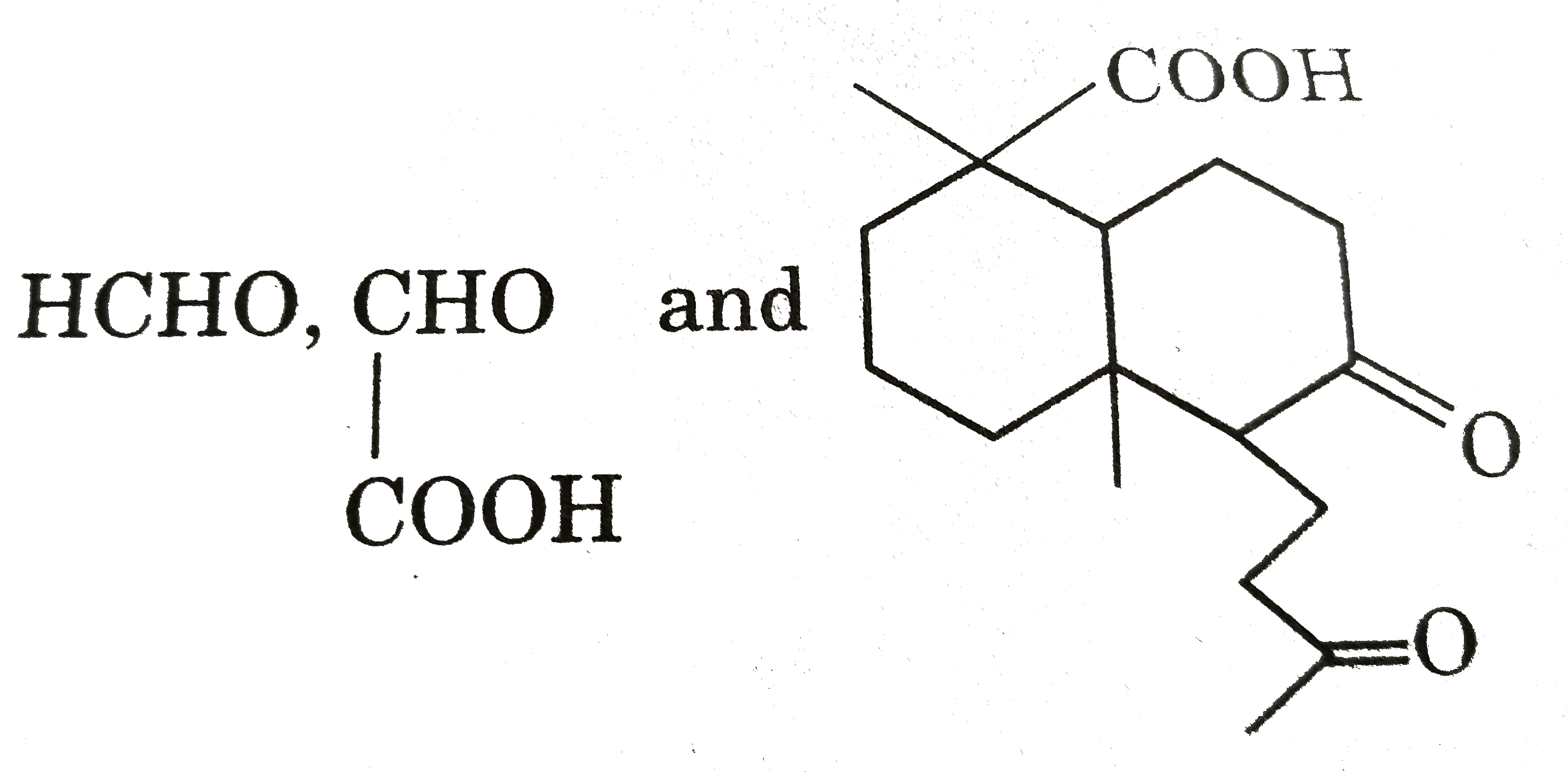
on complete reduction by Na-EtOH Agathene dicarboxylic acid give hydrocarbon C20H38 which have 5 chiral carbon in
Structure of product formed when Agathene dicarboxylic acid is heated with soda lime is :A B
B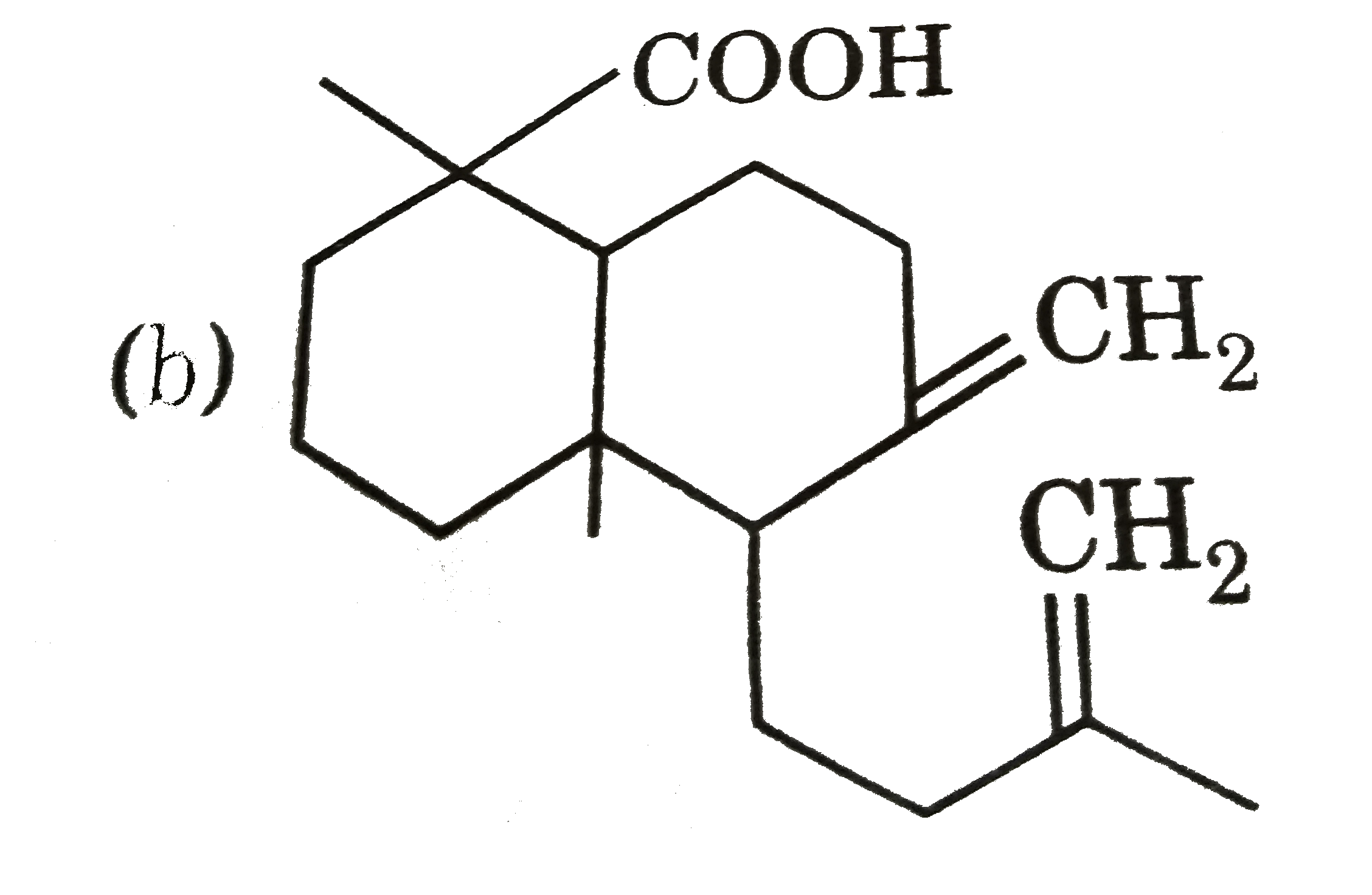 C
C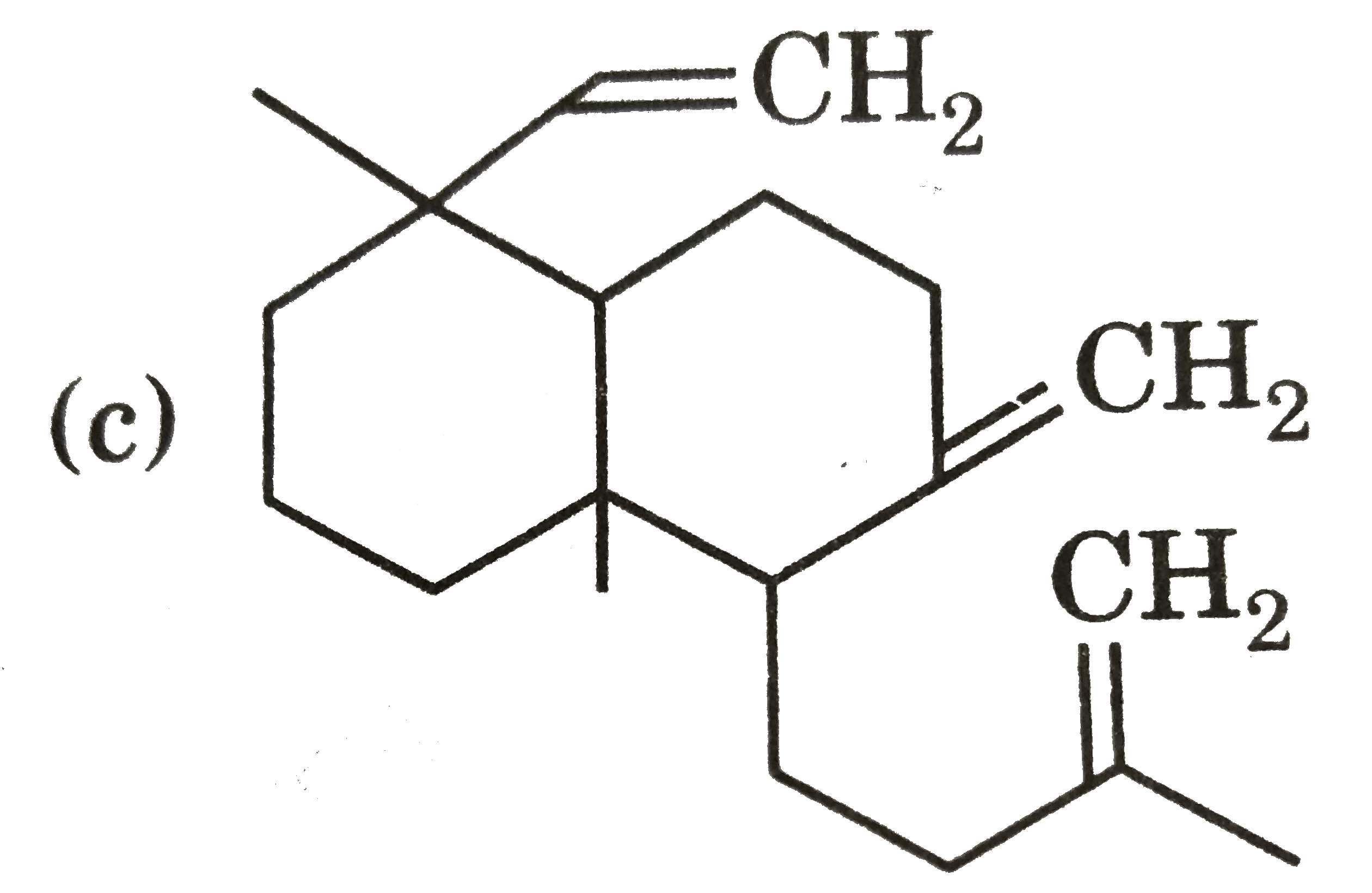 D
D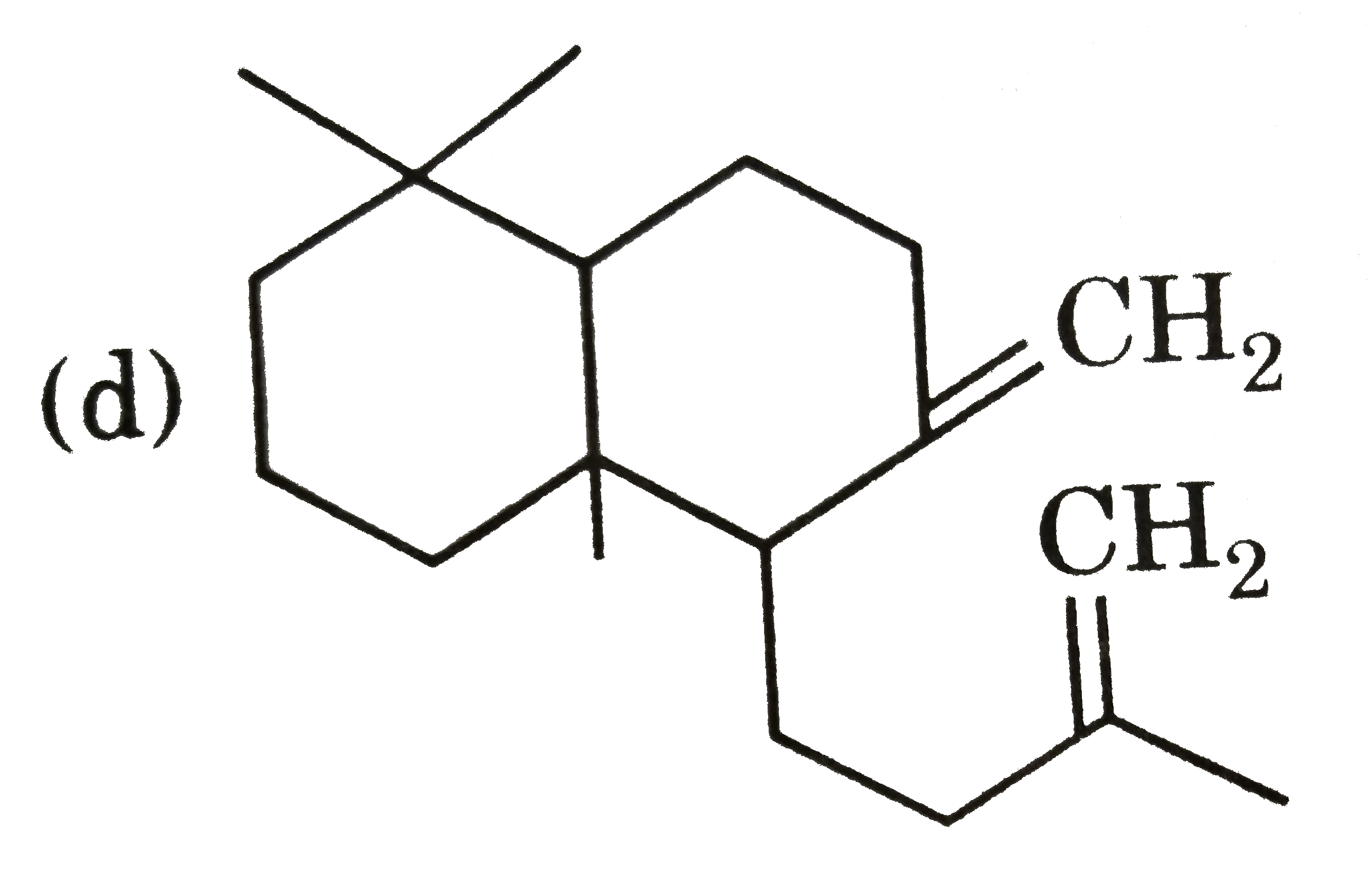
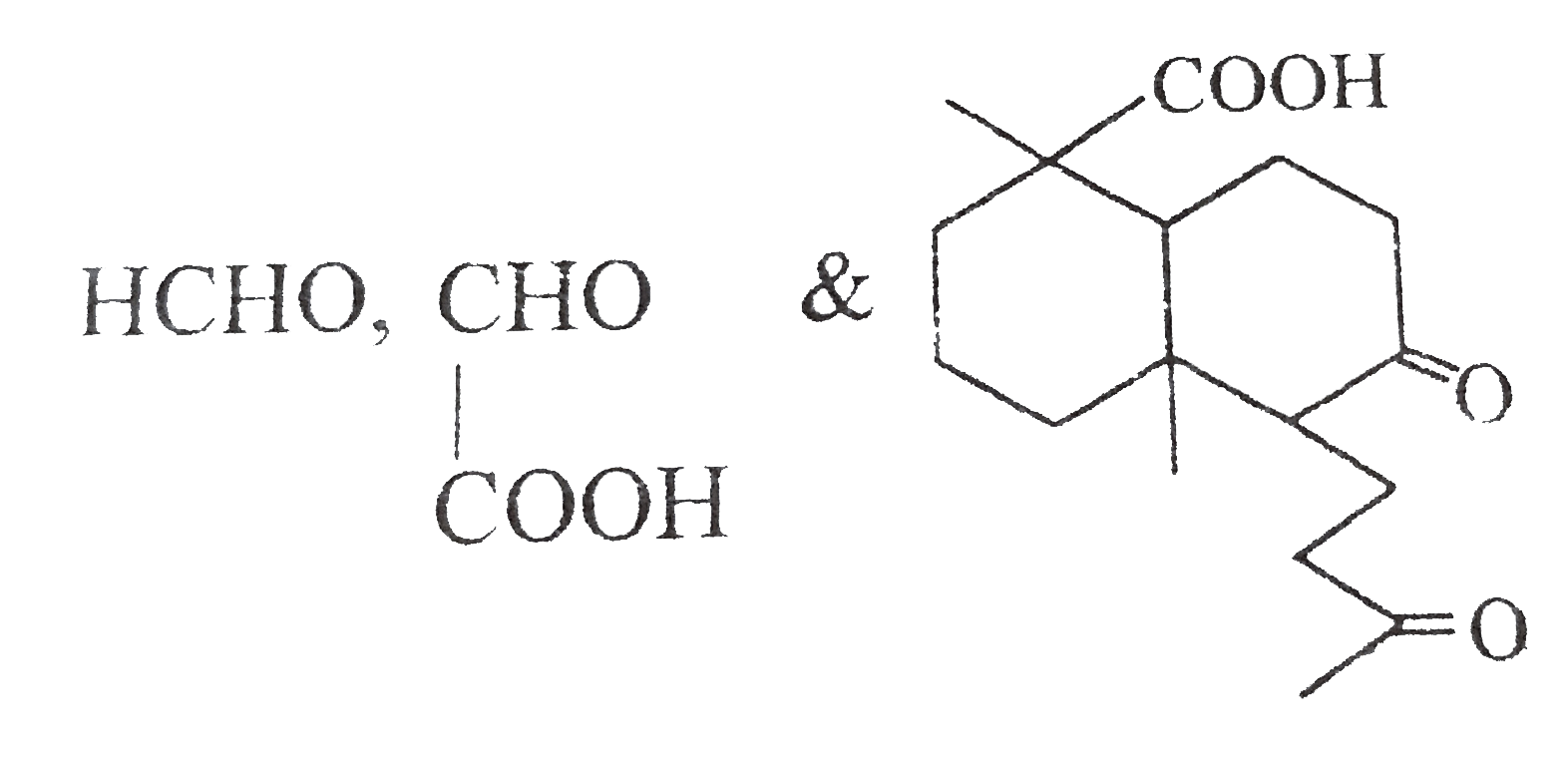
Ozonolysis of a compound Agathene dicarboxylic acid gives following compounds:
On complete reduction by Na−EtOH. Agathene dicarboxylic acid give hydrocarbon C20H38 which have 5 chiral carbon it.
Q. Structure of product formed when agathene dicarboxylic acid is heated with soda lime is:A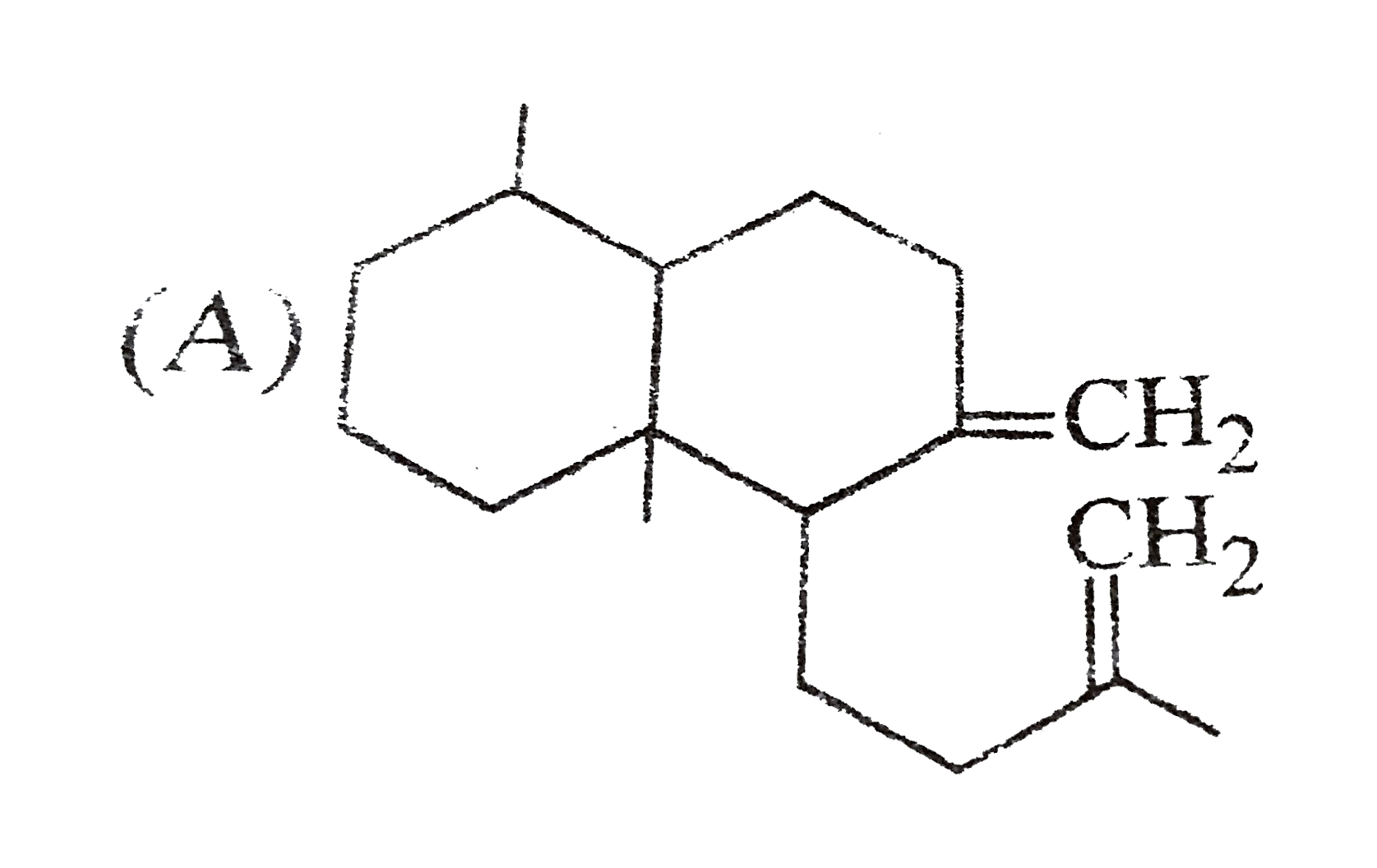 B
B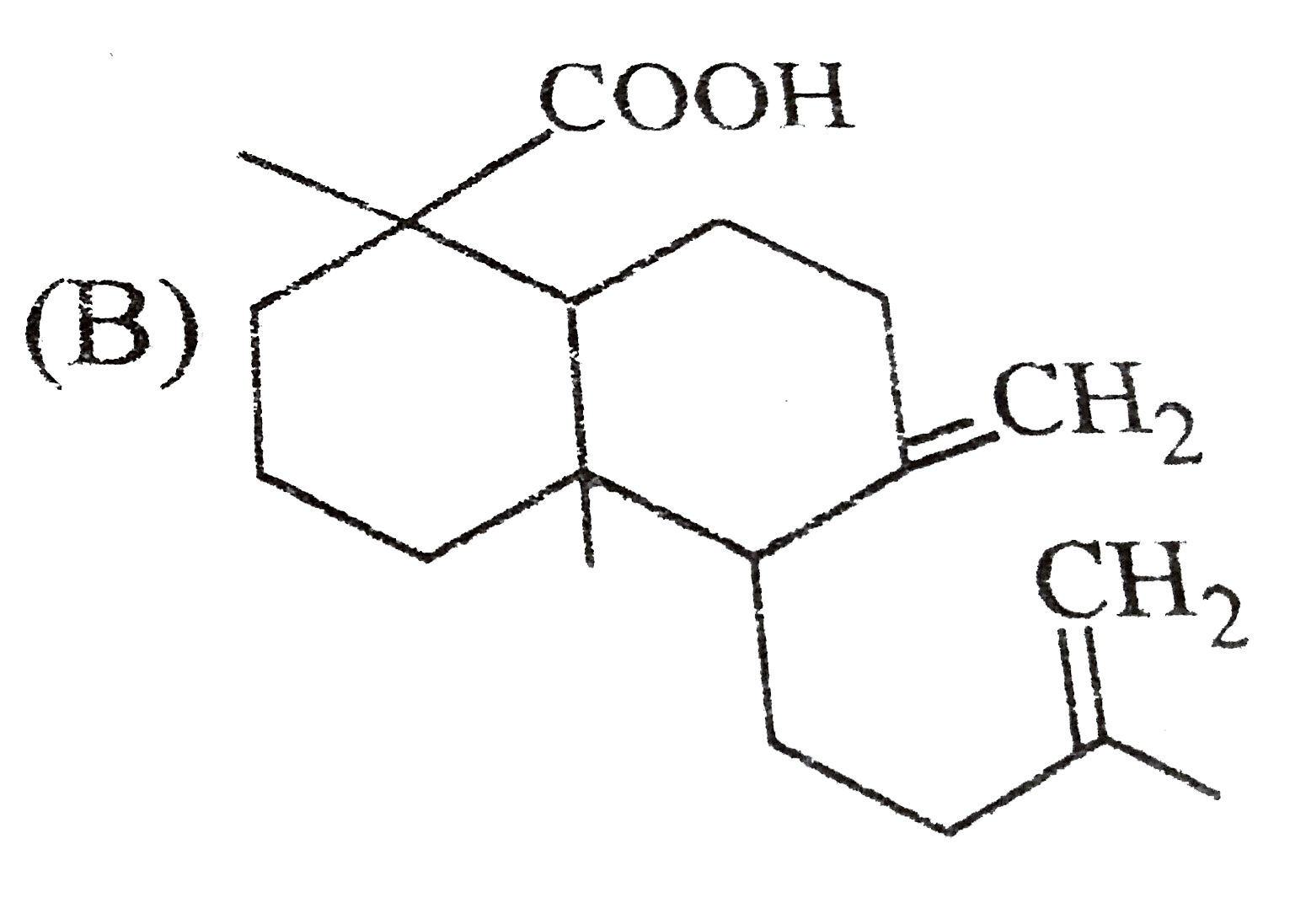 C
C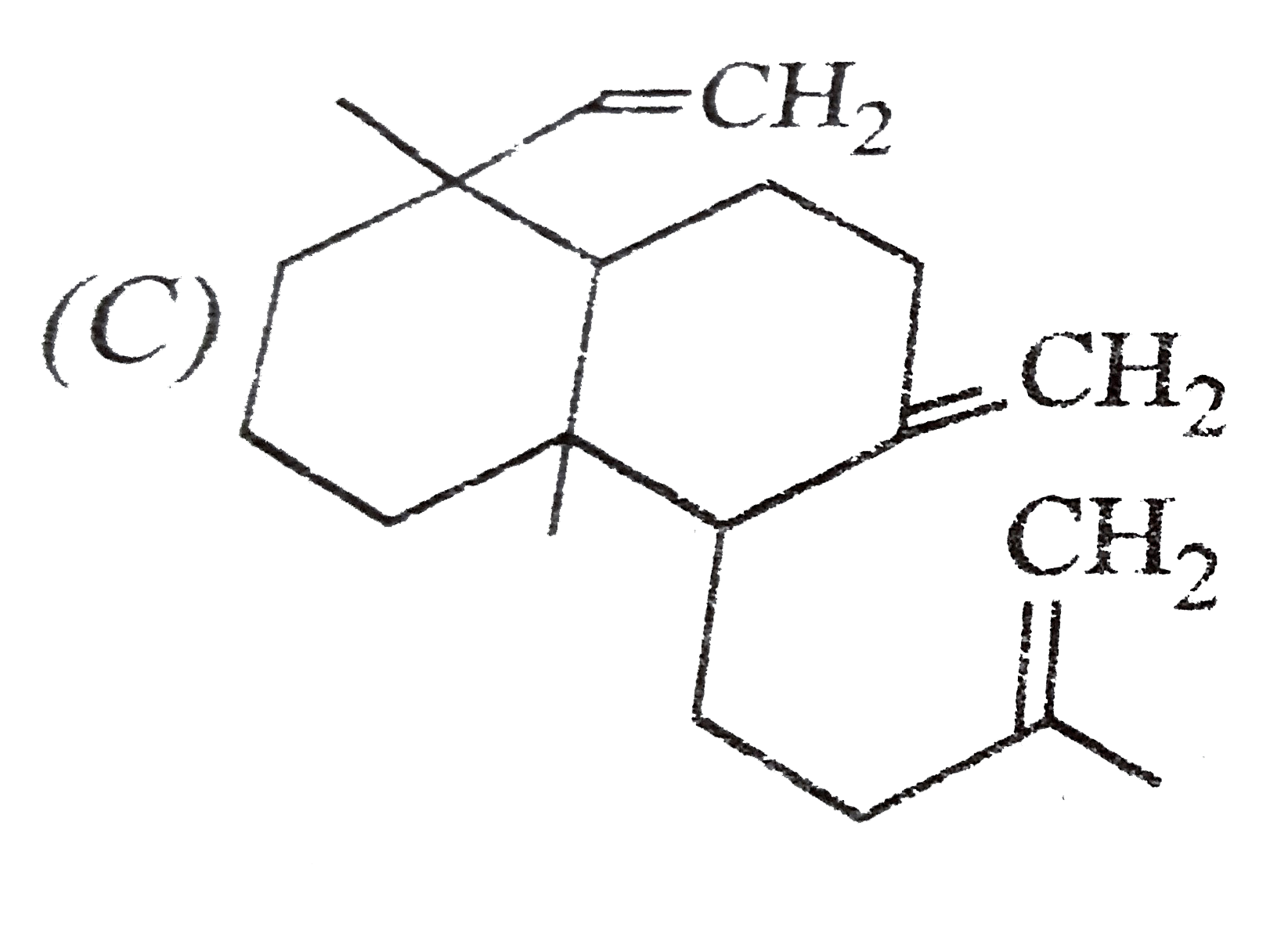 D
D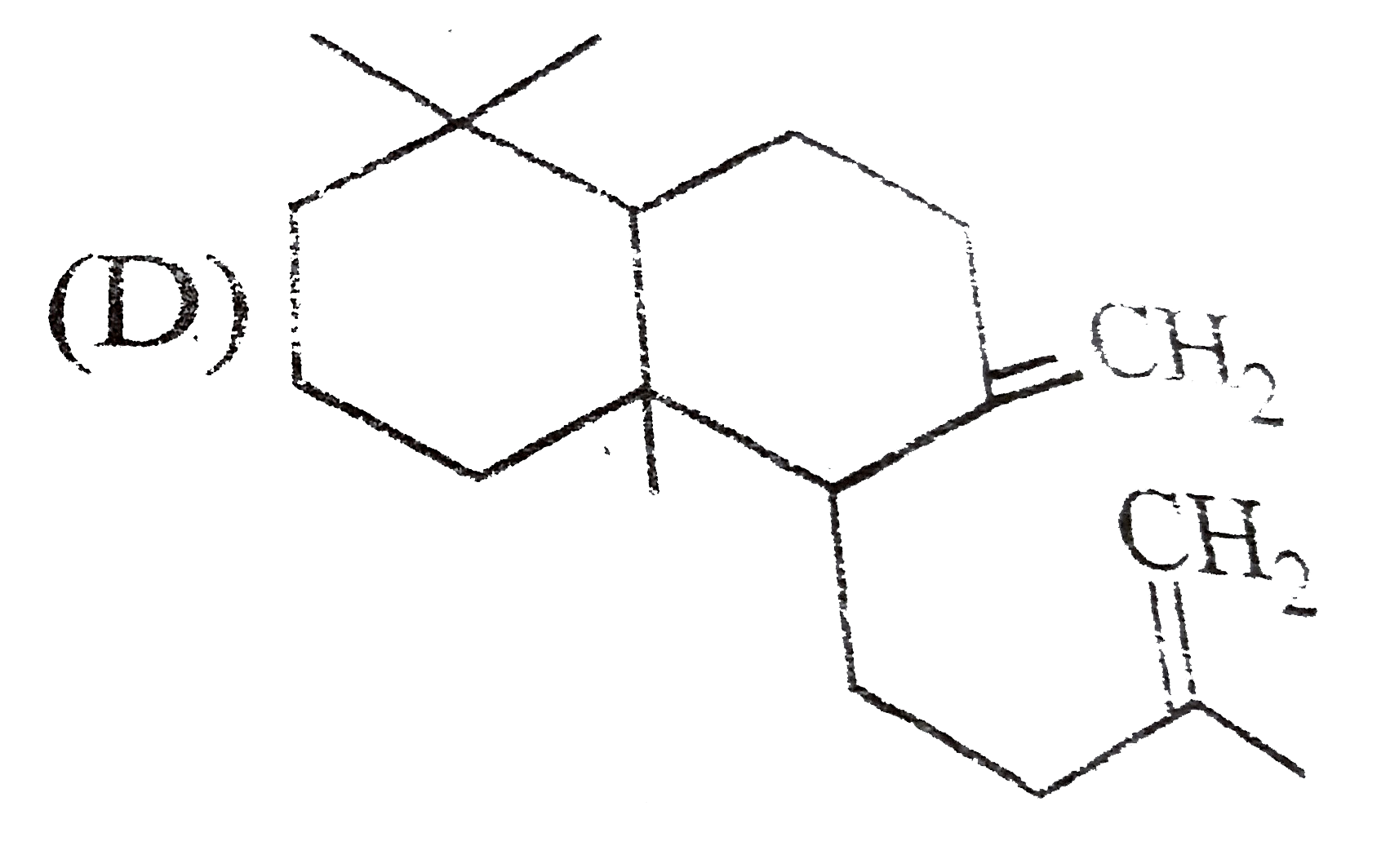
Diane diol worked for several days to prepare compounds shown. She labelled and slept. When she got up all lables had slipped. Her friend Glycol said that They could be easily distuingished by two experiments. Which of the m were optically active.
How many products were obtained when each is treated with periodic acid. after experimentation Diane found the following results
1. Compounds A, E, F were optically active and B, C and D were optically inactive.
2. one product was obtained from the reaction of A, B and D with periodic acid.
3. Two products were obtained from the reaction of F with periodic acid.
4. C and E didnt react with periodic acid.
The structure of the compounds were

Answer the following based on the above observations,
On the basis of the observation which compounds cannot be distinguished ?Acompounds C and FBcompounds B and DCcompounds B and CDcompounds D and E
X' is an alicylic hydrocarbon . with the moleclar formulaC4H8. Y is the corrcsponding aliphatic compound. Give all the possible isomers of y · and their IUPAC names. Identify the products of bro-mination. When Y is treated with hydrogen what are the products formed? How are these products separated from the nuxture?
View SolutionA gaseous compound which contains only C, H and S is burnt with oxygen under such conditions that individual volumes of the reactant and product can be measured at the same temperature and pressure. It is found that 3 volumes of the compound react with oxygen to yield 3 volumes of CO2, 3 volumes of SO2 and 6 volumes of water vapour. What volume of oxygen is required for teh combustion? What is the formula of the compound ? Is this an empirical formula or molecular formula ?
View Solution0.36 g of a bromoderivative of a hydrocarbon (A) when vaporized occupied 65.2 mL at NTP. (A) on reaction with aqueous NaOH gave (B). (B) when passed over alumina at 250∘C, gives a neutral compound (C) while at 350∘C, it gives a hydrocarbon (D). (D) when treated with HBr gave an isomer of(A). When (D) is treated with conc. H2SO4 and the product is diluted with water and distilled, (E) is obtained. Identify from (A) to (E) and explain the reactions involved.
View SolutionA reaction characteristic of vicinal diols is their oxidative cleavage on treatment with periodic acid (HIO4). The carbon-carbon bond of the vicinal diol uinit is broken and two carbonyl groups result. Periodic acid is reduced to iodic acid (HIO3)
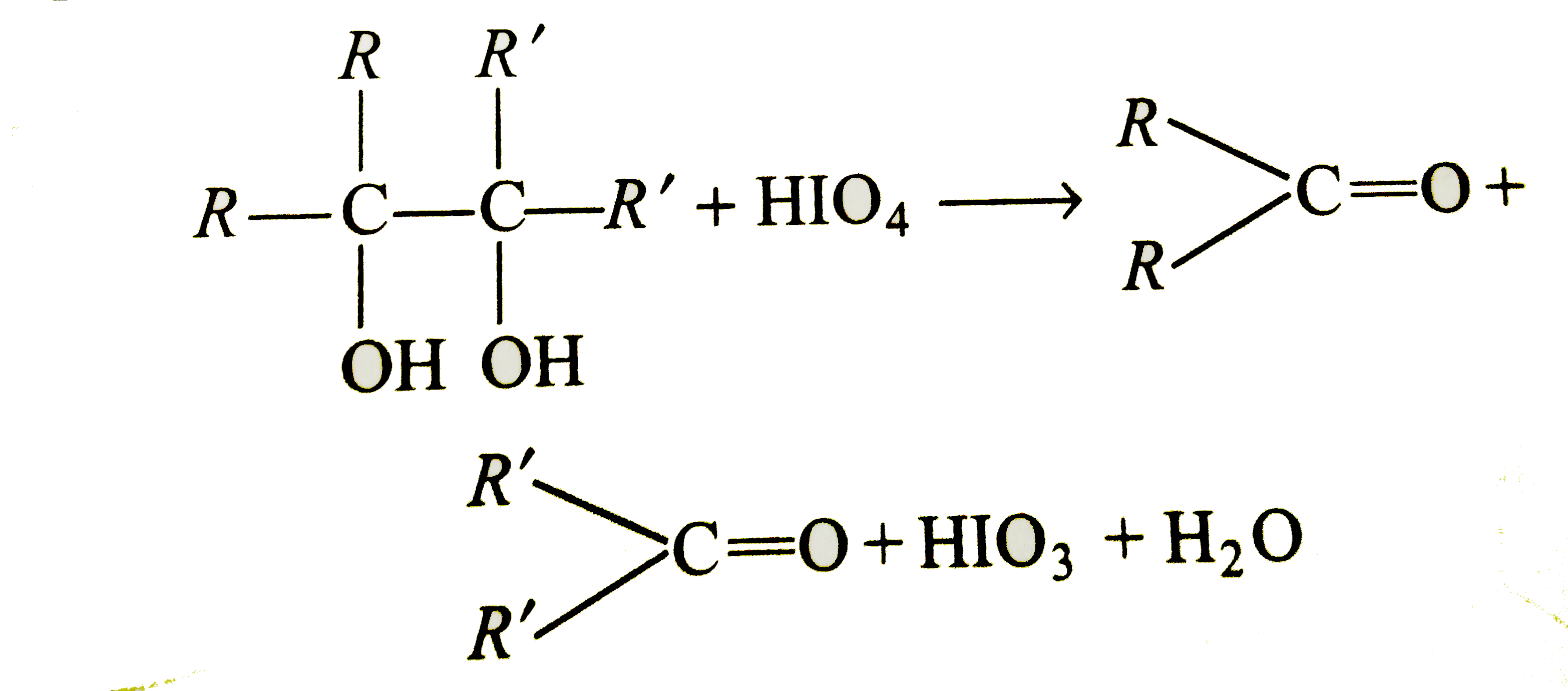
Cyclic diols react to give dicarbonyl compounds. The reactions are faster when the hydroxyl gorups are cid than when they are trans but both stereoisomers are oxidised by periodic acid. Periodic acid cleavage of vicinal diols is often used for analytic purposes as an aid in structure determination. By identifying the carbonyl compounds produced, The constitution of the diol may be deduced.
Which of the following products is/are obtained when glycerol is treated with HIO4 ?
View SolutionAlkenes can be oxidized in presence of different reagents to give different products. Alkenes on oxidation in presence of silver at high temperature give cyclic ethers, which also can be synthesized by using per acids. Alkenes on reductive ozonolysis give carbonyl compounds in presence of zinc and peroxide. On reaction with acidic KMnO4, it also produces corresponding carbonyl compound. Alkynes can also be oxidized in presence of such reagents but the products are different.
A hydrocarbon (C8H8) absorbs two moles of hydrogen in the presence of a platinum caralyst. The reduction product is inert to bromine and KMnO4 solution. The hydrocarbon on ozonolysis produces malonic acid only. The structure of hydrocarbon is
View Solution
